Opening surveys
Marin: Alekhine Defence B04
1.e4
Nf6 2.e5 Nd5 3.d4 d6 4.Nf3 g6 5.Bc4 Nb6 6.Bb3 Bg7
|
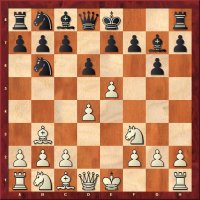 |
|
This
time the alternatives to 7.Ng5 are examined:
above all 7.Qe2 and 7.a4. However, Black has
various ideas – e.g. pressure against e5 and
exchanging the Bb3 by Nc6-a5 – and White cannot
prevent all of them. |
Erenburg: Caro-Kann B12
1.e4 c6 2.d4 d5 3.f3 e6 4.Nc3
Bb4 5.Bf4
 |
|
The name Fantasy Variation
for the move 3.f3 is a little deceptive, because
it is the start of a respectable opening system,
in which Black has to play some accurate moves
and to work hard for equality. |
Kuzmin: Sicilian B80
1.e4 c5 2.Nf3
d6 3.d4 cxd4 4.Nxd4
Nf6
5.Nc3
a6 6.Be3 e6 7.f3 h5
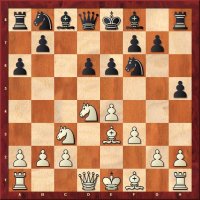 |
|
Directed against g2-g4, the move 7...h5 has many
advantages, the disadvantage – the weakening of
the kingside, however, does not become apparent
for quite a long time. Kuzmin demonstrates
amongst others the most dangerous variation
(9.Bc4) and how Black can meet it. |
Berg:
Sicilian B97
1.e4 c5 2.Nf3
d6 3.d4 cxd4 4.Nxd4
Nf6
5.Nc3
a6 6.Bg5 e6 7.f4 Qb6 8.Qd3
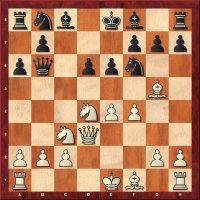 |
|
8.Qd3
in the Poisoned Pawn Variation offers a few
advantages compared to 8.Qd2. These are
clearly brought out in Berg’s contribution. But
it is unclear, whether there are also
disadvantages and so the best way for Black to
treat the move is still veiled in mystery. |
Moskalenko: French C05
1.e4 e6 2.d4 d5 3.Nd2
Nf6
4.e5 Nfd7
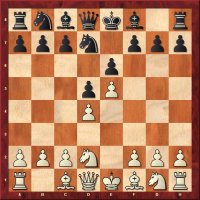 |
|
Our
author presents a compact repertoire against the
Tarrasch Variation, basing it on 3...Nf6. He
demonstrates the most important variations and
ideas in only 5 games. |
Kritz: French C18
1.e4 e6 2.d4 d5 3.Nc3
Bb4 4.e5 c5 5.a3 Ba5 6.b4 cxd4 7.Qg4
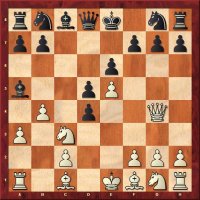 |
|
The
variation with 7.Qg4 is far more ambitious than
that with 7.Nb5 which was treated in CBM 132. As
the author proves, Black is in great
difficulties and there are also no promising
alternatives in sight. |
Skembris: Petroff Defence C42
1.e4 e5 2.Nf3
Nf6
3.Nxe5
d6 4.Nf3
Nxe4
5.d4 d5 6.Bd3
Nd6!?
7.0-0 Be7
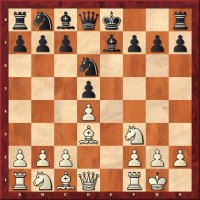 |
|
The
move 6...Nd6!? allows you to avoid the
voluminous variations of theory, which means
that the Petroff becomes interesting for club
players too. But Black still has to find a few
precise moves before reaching complete equality. |
Stohl: Scotch C45
1.e4 e5 2.Nf3
Nc6
3.d4 exd4 4.Nxd4
Bc5 5.Be3 Qf6 6.c3
Nge7
7.Bc4 Ne5
8.Be2 Qg6 9.0-0 d6 10.f4
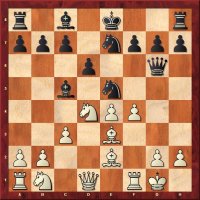 |
|
Magnus Carlsen used the pawn
sacrifice 10.f4 against Leko and gained an
impressive victory, sufficient reason for Igor
Stohl to take a close look at this variation.
His conclusion: Black can equalise with best
play. |
Marin: Ruy Lopez C66
1.e4 e5 2.Nf3
Nc6 3.Bb5 d6 4.d4 Bd7 5.0-0 Nf6 6.Nc3
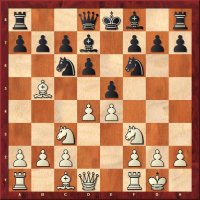 |
|
With
6...Be7 Black allows 7.Bxc6, but the immediate
6...exd4 also has its disadvantages. Mihail
Marin thoroughly investigates both variations
and weighs up advantages and disadvantages. He
considers both very playable. |
Karolyi: Queen's Gambit Accepted D20
1.d4 d5 2.c4 dxc4 3.e4 c5 4.Nf3
cxd4
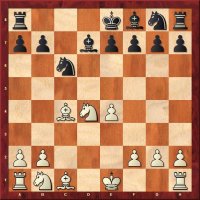 |
|
After looking at 4.d5 in CBM 132 Tibor Karolyi
now investigates 4.Nf3; White hopes that his
lead in development will bring him an advantage
after 4...cxd4 5.Qxd4 Qxd4 6.Nxd4 Bd7 7.Bxc4.
But the analyses demonstrate that Black
equalises without too much effort. |
Langrock: Queen's Indian Defence E12
1.d4 Nf6 2.c4 e6 3.Nf3 b6 4.a3 Bb7 5.Nc3 g6
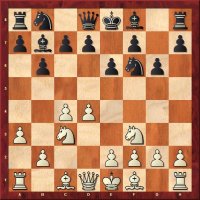 |
|
In
the concluding part, Hannes Langrock subjects
the critical continuations 6.Qc2 and 6.Bg5 to
thorough analysis. His examination of them
proves that Black need fear neither of these
moves. |
|
Krasenkow: King's Indian E90
1.d4 Nf6 2.c4 g6
3.Nc3 Bg7 4.e4 d6 5.Nf3 0-0 6.h3 e5 7.d5
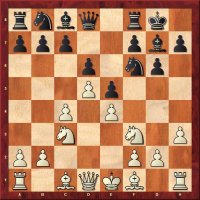 |
|
In Part 2 (of a total of 3) Michal
Krasenkow investigates all the
continuations after 7.d5, except for
7...a5. It appears that White can obtain
an advantage after both 7...Nh5 and
7...Na6. |
|